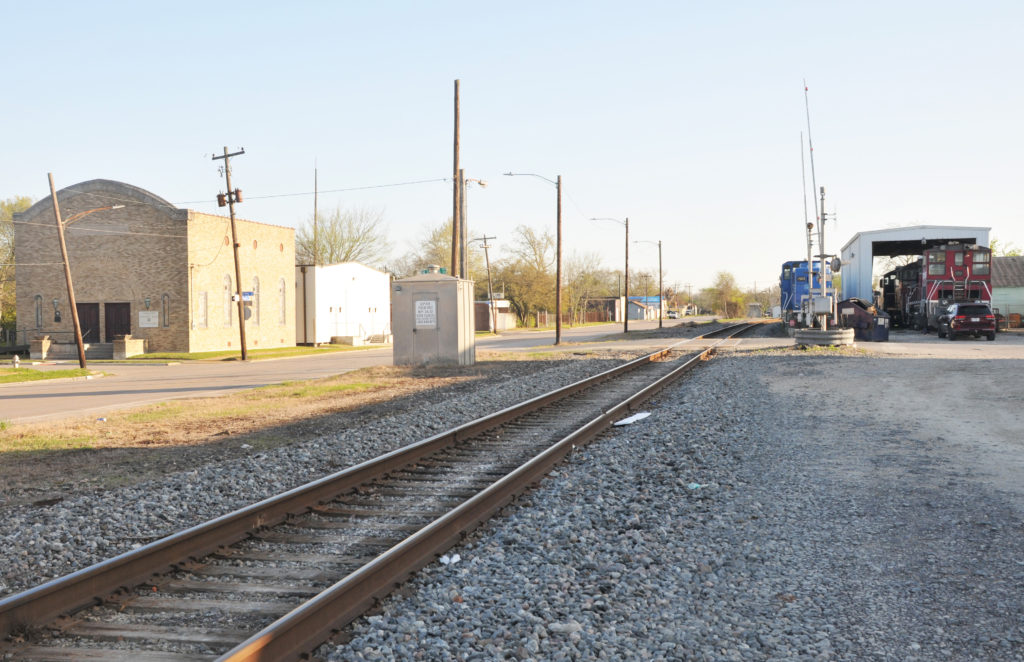Resilience Treatments & Strategies
Environmental Hazards

Description
Nearby industrial sites or infrastructure (a.k.a. brownfield sites) that may pose some level of health or safety risk under ordinary conditions. In a disaster, they become potential sources of contaminants, possibly impeding recovery operations. Examples include power stations and substations, refineries, incinerators, chemical plants or storage facilities, waste treatment plants or disposal sites, freight rail lines or yards, and gas stations. The extent of the hazard can depend on its size/capacity and distance from your property.
Typical risk factor of this component:
Very High
Environmental hazards typically have a very high exposure to elements such as wind or rain. At many sites, a failure could have a very severe impact to the structure’s stability, its assemblies’ conditions, and safe occupation.
Typical Damages from Floods or Hurricanes
- Downed power lines inhibiting access from emergency responders and posing electric shock hazards
- Toxic chemical releases complicate post-disaster occupancy, often requiring special cleanup
- Ruptured tanks or pipes of flammable materials can combust, which can start fires, launch projectiles, and cause damage with the blast shockwave
Other common conditions contributing to vulnerability towards floods or hurricanes
- Lack of special flood control measures, such as dikes or levees, to protect heavy industry
- Air pollution and acid rain deteriorate many materials at an accelerated rate
- Vibrations from heavy industrial traffic, excavation, or blasting operations near the building can cause seismic-associated deterioration of assemblies
Resilience Treatments and Strategies
In-house
Report any environmental concerns (e.g., spills, unauthorized dumping) to the relevant authority (e.g., EPA, TCEQ).
Monitor and document damages that are associated with environmental hazards. Photograph or video the hazard and what is happening at your property (e.g., building assemblies moving, cracks appearing or worsening, soot/chemical staining).
Understand vulnerabilities posed by nearby hazards and plan your responses in advance.
Professional needed [type]
If a facility poses particular concern for safety, consult local authorities and experts on how it may impact disaster recovery in your area and possible solutions [government, NGO, or legal].
Install vibration dampers to seismically isolate the building if vibrations cannot be reduced [engineer].
Environmental Hazards

Description
Nearby industrial sites or infrastructure (a.k.a. brownfield sites) that may pose some level of health or safety risk under ordinary conditions. In a disaster, they become potential sources of contaminants, possibly impeding recovery operations. Examples include power stations and substations, refineries, incinerators, chemical plants or storage facilities, waste treatment plants or disposal sites, freight rail lines or yards, and gas stations. The extent of the hazard can depend on its size/capacity and distance from your property.
Typical risk factor of this component:
Very High
Environmental hazards typically have a very high exposure to elements such as wind or rain. At many sites, a failure could have a very severe impact to the structure’s stability, its assemblies’ conditions, and safe occupation.
Typical Damages from Floods or Hurricanes
- Downed power lines inhibiting access from emergency responders and posing electric shock hazards
- Toxic chemical releases complicate post-disaster occupancy, often requiring special cleanup
- Ruptured tanks or pipes of flammable materials can combust, which can start fires, launch projectiles, and cause damage with the blast shockwave
Other common conditions contributing to vulnerability towards floods or hurricanes
- Lack of special flood control measures, such as dikes or levees, to protect heavy industry
- Air pollution and acid rain deteriorate many materials at an accelerated rate
- Vibrations from heavy industrial traffic, excavation, or blasting operations near the building can cause seismic-associated deterioration of assemblies
Resilience Treatments and Strategies
In-house
Report any environmental concerns (e.g., spills, unauthorized dumping) to the relevant authority (e.g., EPA, TCEQ).
Monitor and document damages that are associated with environmental hazards. Photograph or video the hazard and what is happening at your property (e.g., building assemblies moving, cracks appearing or worsening, soot/chemical staining).
Understand vulnerabilities posed by nearby hazards and plan your responses in advance.
Professional needed [type]
If a facility poses particular concern for safety, consult local authorities and experts on how it may impact disaster recovery in your area and possible solutions [government, NGO, or legal].
Install vibration dampers to seismically isolate the building if vibrations cannot be reduced [engineer].